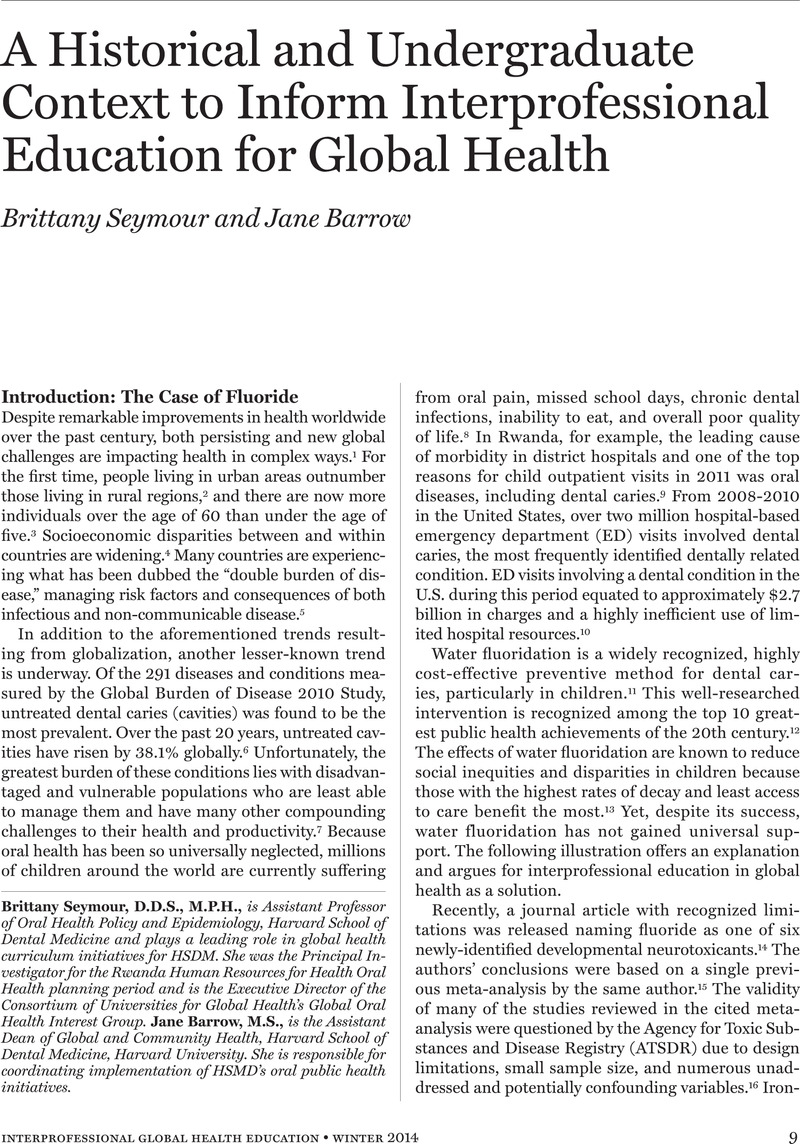Crossref Citations
This article has been cited by the following publications. This list is generated based on data provided by Crossref.
Rowthorn, Virginia
Olsen, Jody
and
Hirshon, Jon Mark
2014.
Introduction.
Journal of Law, Medicine & Ethics,
Vol. 42,
Issue. S2,
p.
5.
Poirier, Therese I
Devraj, Radhika
Blankson, Faustina
and
Xin, Huaibo
2016.
Interprofessional Online Global Health Course.
American Journal of Pharmaceutical Education,
Vol. 80,
Issue. 9,
p.
155.
Komendziński, Tomasz
Dreszer-Drogorób, Joanna
Mikołajewska, Emilia
Mikołajewski, Dariusz
and
Bałaj, Bibianna
2016.
Organizational Culture and Ethics in Modern Medicine.
p.
78.
Seymour, Brittany
Yang, Helen
Getman, Rebekah
Barrow, Jane
and
Kalenderian, Elsbeth
2016.
Patient‐Centered Communication: Exploring the Dentist's Role in the Era of e‐Patients and Health 2.0.
Journal of Dental Education,
Vol. 80,
Issue. 6,
p.
697.
Woodmansey, Karl F.
Rowland, Briana
Horne, Steve
and
Serio, Francis G.
2017.
International Volunteer Programs for Dental Students: Results of 2009 and 2016 Surveys of U.S. Dental Schools.
Journal of Dental Education,
Vol. 81,
Issue. 2,
p.
135.
Plummer, Virginia
Tozer-Jones, Jennie
and
Williams, Brett
2017.
The Bachelor of Nursing/Bachelor of Emergency Health (Paramedic) Degree: How well does it Align with Course Objectives?.
Australasian Journal of Paramedicine,
Vol. 14,
Issue. ,
p.
1.
Komendziński, Tomasz
Dreszer-Drogorób, Joanna
Mikołajewska, Emilia
Mikołajewski, Dariusz
and
Bałaj, Bibianna
2017.
Medical Education and Ethics.
p.
203.
Newsam, Rebecca
2018.
Operating department practitioners and midwives: The undervalued obstetric care collaboration.
British Journal of Midwifery,
Vol. 26,
Issue. 11,
p.
714.
Helmi, Mohammad
Spinella, Mary Kate
and
Seymour, Brittany
2018.
Community water fluoridation online: an analysis of the digital media ecosystem.
Journal of Public Health Dentistry,
Vol. 78,
Issue. 4,
p.
296.
Simon, Lisa
Beckmann, David
Reidy, Patricia
Cohen, Marya
and
Tobey, Matthew
2019.
Evaluation of an Interprofessional Student–Faculty Collaborative Clinic in a Jail.
Journal of Correctional Health Care,
Vol. 25,
Issue. 4,
p.
362.
Seymour, Brittany
2024.
Global Oral Health- Seeing My Reflection in a Changing Tide.
Journal of the California Dental Association,
Vol. 52,
Issue. 1,



